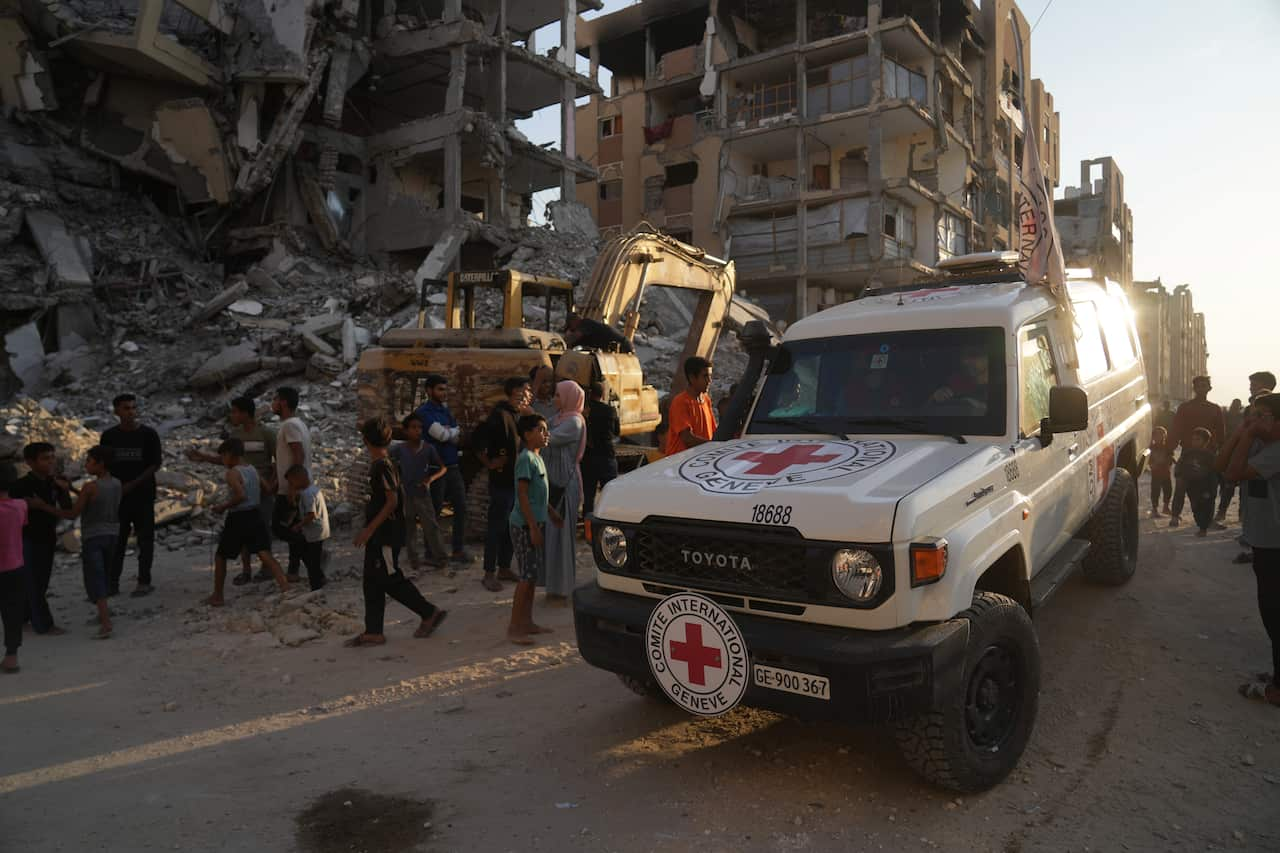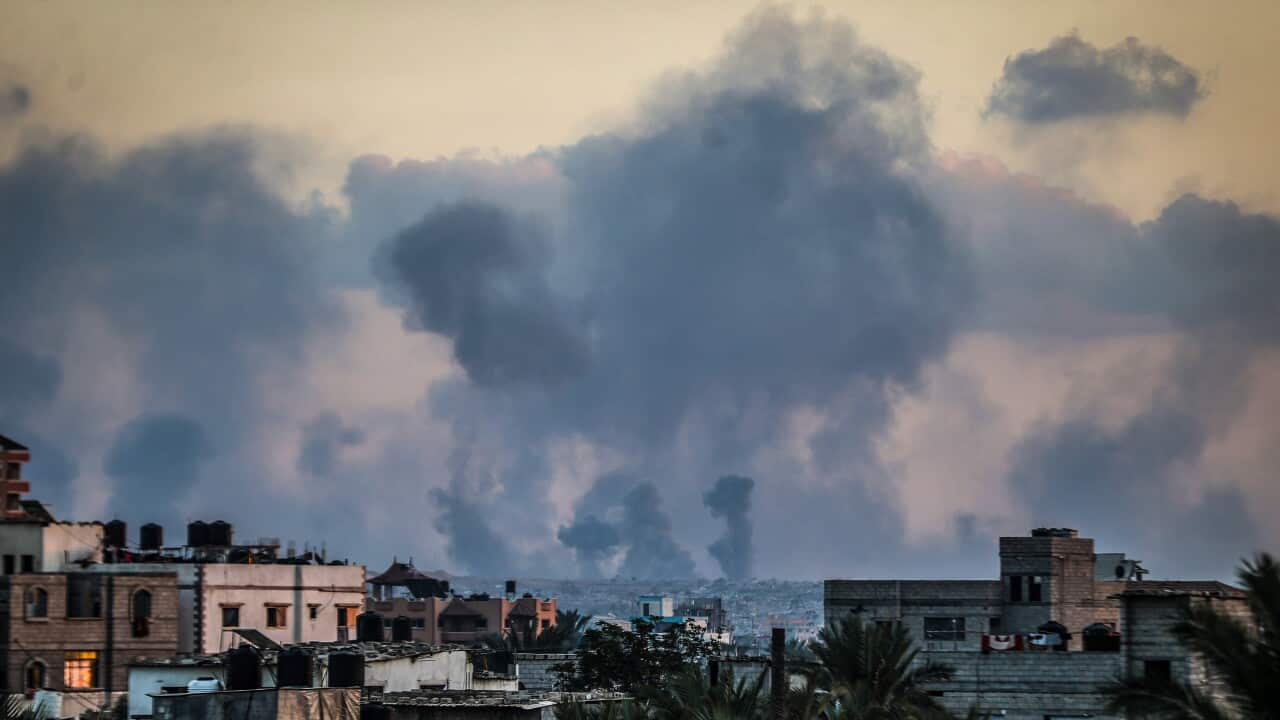Israel says it has resumed enforcement of the Gaza ceasefire after earlier carrying out strikes on the enclave in response to earlier attacks on its forces.
“In accordance with the directive of the political echelon, and following a series of significant strikes in response to Hamas’ violations, the IDF has begun the renewed enforcement of the ceasefire,” the military said in a statement on Sunday.
The Israeli military earlier said it struck Hamas targets across the enclave, including field commanders, gunmen, a tunnel and weapons depots, after militants launched an anti-tank missile and fired on its troops, killing two Israeli soldiers.
Residents in Gaza and local health authorities said airstrikes and tank fire killed at least 18 people, including at least one woman.
At least one strike hit a former school sheltering displaced people in the area of Nuseirat, residents said.
The armed wing of Hamas said it remained committed to the ceasefire agreement, was unaware of clashes in Rafah, and had not been in contact with groups there since March.
Israeli airstrikes in Jabalia in northern Gaza resulted in several deaths, with the bodies of those killed brought to al-Shifa Hospital. Source: Anadolu, Getty / Saeed M. M. T. Jaras
Israeli Prime Minister Benjamin Netanyahu said he had ordered the military to respond forcefully to what he described as Hamas’s violations of the ceasefire.
Uncertain path to peace
An Israeli security official earlier said that the transfer of aid into Gaza has been halted until further notice, following what he described as Hamas’s blatant violation of the ceasefire agreement.
However, Israeli media reported that aid flow would resume on Monday following US pressure.
Axios, citing a U.S. official, reported that Israel informed Washington that it will reopen a crossing into Gaza on Monday morning.
Fearing the truce may collapse, some Palestinians rushed to buy goods from a main market in Nuseirat, and families left their homes in Khan Younis further south, after airstrikes hit nearby.
The strikes were reminiscent of Israel’s response to what it viewed as serious violations of its ceasefire with Hamas’s Lebanese ally Hezbollah in late 2024, less than a week after it came into effect and after days of mutual accusations of truce breaches, though that ceasefire has since largely held.
But formidable obstacles remain in the way of a durable peace in Gaza, where a ceasefire collapsed in March after nearly two months of relative calm when Israel unleashed a barrage of airstrikes.
Dispute over bodies of hostages
The new ceasefire took effect on October 10, halting two years of war, but the Israeli government and Hamas have been accusing each other of violations of the ceasefire for days.
Israel defence minister Israel Katz said the “yellow line” where Israeli forces had pulled back under the ceasefire agreement would be physically marked and that any violation of the ceasefire or attempt to cross the line would be met with fire.
A Red Cross vehicle arrives at a site in Khan Younis, Gaza, where Hamas has searched for the remains of Israeli hostages. Source: AP / Abdel Kareem Hana
Hamas detailed what it said was a series of violations by Israel that it says have left 46 people dead and stopped essential supplies from reaching the enclave.
On Saturday, Israel said the Rafah border crossing between Gaza and Egypt, which had been expected to be reopened this week, would remain closed and that its reopening would depend on Hamas fulfilling its obligations under the ceasefire.
Israel says Hamas is being too slow in handing over bodies of deceased hostages. Hamas last week released all 20 living hostages it had been holding and in the following days has handed over 12 of the 28 deceased captives.
The group says it has no interest in keeping the bodies of remaining hostages and that special equipment is needed to recover corpses buried under rubble.
The Rafah crossing has largely been shut since May 2024. The ceasefire deal also includes the ramping up of aid to Gaza, where hundreds of thousands of people were determined in August to be affected by famine, according to the IPC global hunger monitor.
The crossing has in previous ceasefires functioned as a key conduit for humanitarian aid to flow into the enclave.
Although the flow of aid through another crossing had, until Sunday’s decision to halt aid, increased significantly since the ceasefire began, the United Nations says far more is needed.
Key questions of Hamas disarmament, the future governance of Gaza, the make-up of an international “stabilisation force”, and moves towards the creation of a Palestinian state have yet to be resolved.








